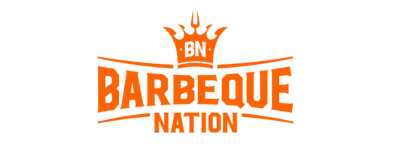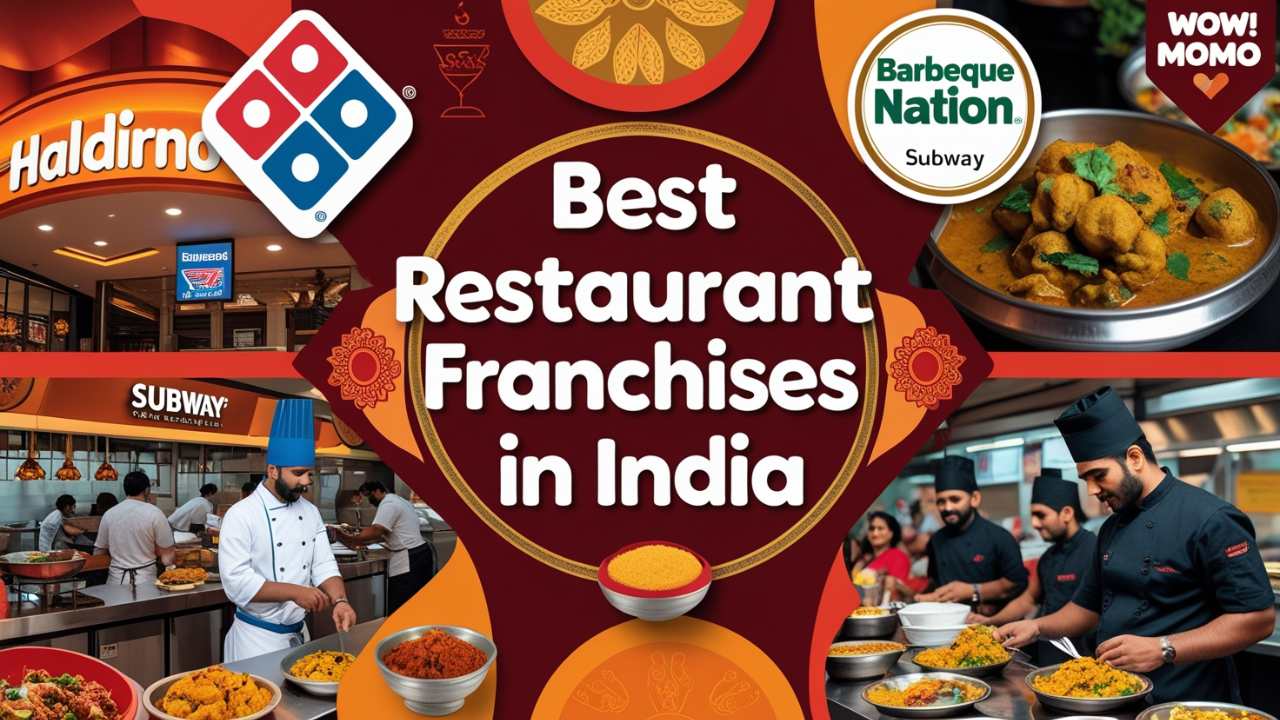The food service sector in India is a giant and franchise-based food services has been identified as the most vibrant and the one that is in the fast growth mode. The booming of the middle-income citizens, the influx of disposable income, the growing urbanisation, and the expanding demand of branded, sanitary, and convenient food have sparked the restaurant franchise industry to new levels. The figures present an interesting story of this growth. The Indian food service market is expected to reflect a mind-boggling figure of 7.98 lakh crore (in rupees) in 2028 with a compound annual growth rate (CAGR) of 11.19%. In this context, the franchise industry plays an important role with the food industry having the highest dominance as it consumes more than 31 percent of the total franchise market.
Moreover, the overall market share of chained restaurants in India is more than 54 % of Quick Service Restaurants (QSRs) where most operations are run by franchising, which proves the vision and unbelievable success of the model and its acceptance by consumers. This unprecedented growth curve of restaurant franchise in India is testament to the high potential that exists to those entrepreneurs wanting to venture into food and beverage with a time-tested and proven business model.
Overview of the Restaurant Franchise Industry in India
The Indian restaurant franchise business is a dynamic and heterogeneous market, which has transformed itself into a stage where local brands are picking up and growing with a sharp cutthroat competitive atmosphere. The international QSR chains such as McDonalds, Dominos, KFC were the first international chains to come up in India with their franchise model and the processes and supply chains were the first ones to establish standards in the industry. The adaptation of their menus and marketing techniques to suit Indian palate was a success and this went on to prove the viability of the model.
Nowadays, the market is much more polarized and competitive. The industry is quite diverse and covers Quick Service Restaurants (QSRs), casual, fine dining, cafes, cloud kitchens and specialised food kiosk. Although QSRs are quite dominant still, the current consumer preference is shifting into experience dining, healthy foods, and traditional regional and international foods. This cleared the path to emergence of national brands such as the Barbeque Nation, Wow! Momo, and Biryani Blues, both have benefited by their knowledge of tastes in the area to develop strong chains of franchises.
This has been triggered further by the digital revolution that has made food delivery lords such as Zomato and Swiggy a must-have business partner since the customer base of a franchise can be expanded far and wide without physically being present. The duet that has taken place between physical outlets and online provision has transformed the working elements of restaurant franchising in contemporary times.
Why Invest in a Restaurant Franchise in India?
Opening a restaurant franchise is financially a very persuasive bet than opening a restaurant without a franchise. It gives a systematic entry into the food service business which cuts down most of the risks that go with a new business. The following are the main reasons as to why this model is appealing:
- Brand Recognition: The biggest benefit is that there is already an existing brand renowned with trust and customer base. This saves much time and marketing cost to win the customers since the brand is no longer unknown.
- Proven Business Model: The franchisees invest in a business model that is tried, tested and perfected. These have become standardised operating procedures (SOPs), recipes, supply chain management and marketing strategies, and this automatically means that guesswork is removed and the room of error minimized.
- Detailed Training and Support: Franchisors offer all-round training support. This mostly includes staff training, operations administration, accounting, technology system, and marketing support. Such a network is priceless, more so to novice and long-time business owners.
- Increased Finance Availability: Interested finance entities such as banks and other financial institutions are usually more likely to lend money to franchise businesses since they have an overall low failure rate and established reputation as opposed to independent startups.
- Reduced Risk: Although no business is risk free, franchising is associated with lowered risk exposure. A combination of a well-known brand, a tested system, and the support are sure to multiply the chances of being successful.
Key Factors to Consider Before Buying a Restaurant Franchise
Going through the franchise process implies performing due diligence and assessing yourself. It is a long term investment and it is very important that a decision is made. The following are the important aspects:
- Your Own Interests and Skills: Do your own passion fit the franchise type. A cafe franchise is not as likely to work out as a diner late at night in case you are a morning person, who enjoys coffee culture. Evaluate your managerial competence, financial savvy as well as your readiness to work in accordance with a ready-made system.
- Franchisor Reputation and Track Record: Do a thorough research on franchisor. Talk to current and previous franchisees to have a raw look at how they were treated in terms of support, profitability and the overall relationship with the parent company. Find out whether litigation or contention has occurred.
- Franchise Disclosure Document (FDD): It is the most important document. Ask a lawyer specialising in franchise law to scrutinise it, preferably. It has detailed information concerning the business such as charges, duties, representation of financial performance, and bulldog clauses.
- Complete Investing and Recurring Expenses: Be aware of the total investment situation. This entails the initial franchise fee, startup fees such as interior and equipping of the outlet and signage, and the working capital. It is also good to be transparent on the future royalties, marketing, and any other additional costs.
- Training and Support System: Analyse the quality and level of training and of continuous attention given by the franchisor. Does it discuss every sector of the business? Can you get the support when it is needed?
- Competition and Market Potential: Find out the market possibilities of taking that particular franchise in the location at which you want it. Does it have a market demand for its products? What are the direct competitors and indirect competitors? An excellent brand will never work in an over-saturated or inappropriate market.
Top 14 Restaurant Franchises in India (2025 Updated List)
1. Domino’s Pizza

- Type: Quick Service Restaurant (QSR)
In India, Jubilant FoodWorks is a dominant player in the restaurant franchise space, with Domino’s leading the pizza market. It has built its empire on the strength of a powerful brand name, menu innovation tailored to Indian palates (such as Pizza Mania and regional toppings), and a highly efficient delivery system that popularized its iconic “30 minutes or free” promise.
A Domino franchise provides you with the opportunity of becoming a part of a highly capable logités and marketing force with a phenomenal brand recall and a tried and tested business format providing consistent returns to all its franchises thus being one of the most coveted QSR franchises.
- Franchise Models: Non-traditional stores (food courts, canteens) and traditional stores.
- Franchise Fee: ₹50 Lakhs (as a refundable security deposit)
- Investment: ₹1 Crore to ₹2 Crores
- Profit Margin: 15% – 20%
- Space Required: 1200 – 1500 sq. ft.
- Website: https://www.dominos.co.in/
2. Subway

- Type: Quick Service Restaurant (QSR)
In India, Subway has created its own identity as the niche within QSR sector, by portraying itself as a healthier option to fried food. Customising submarine sandwiches (“subs”) and salad is its core offering where customers get to decide on bread, vegetables, sauces and proteins.
The targeted consumer in this model is an urbanite who is health conscious. The model of operations of the brand is not too complicated, so there is no sophisticated cooking but the costs of equipment are reduced and the training of staff is made easier.
Having a less and very parameterized footprint demand than most other QSRs, a Subway shop can be launched everywhere, inclusive of high streets, malls, and tech parks, also making the franchise offer and varied.
- Franchise Models: FOFO (Franchise Owned, Franchise Operated)
- Franchise Fee: ₹6.5 Lakhs
- Investment: ₹60 Lakhs to ₹1 Crore
- Profit Margin: 12% – 18%
- Space Required: 350 – 600 sq. ft.
- Website: https://www.subway.com/en-IN/
3. KFC

- Type: Quick Service Restaurant (QSR)
Yum! is a company consisting of Kentucky Fried Chicken (KFC). Brands, one of the world-known symbols, is the maker of pressure-fried chicken which is dressed with a top-secret ingredient mixture of 11 herbs and spices developed by Colonel Sanders. KFC has also been able to modify its menu to suit the local tastes by adding menu products such as the Zinger burger, rice bowls and spicy versions in India. The brand name is associated with quality, tasty chicken and is very much in prime cities as well as food courts.
As a restaurant franchise in India, KFC offers partners a chance to leverage immense global brand equity, sophisticated marketing strategies, and a well-established operational framework. It is a high-investment, high-return opportunity that appeals to entrepreneurs aiming to align with a trusted leader in the international QSR sector.
- Franchise Models: FOFO, with a focus on multi-unit operators.
- Franchise Fee: Approx. ₹40 Lakhs
- Investment: ₹1.5 Crore to ₹3 Crores
- Profit Margin: 10% – 15%
- Space Required: 1000 – 1800 sq. ft.
- Website: https://online.kfc.co.in/
4. Barbeque Nation

- Type: Casual Dining
Barbeque Nation revolutionized casual dining in India by introducing the concept of a live, on-the-table grill. Combining a fixed-price, all-you-can-eat buffet with an interactive experience, the brand offers an extensive selection of starters, main courses, and desserts. This engaging dining format became an instant favorite for group outings and celebrations, with a focus on making each visit lively and entertaining.
Traditionally company-owned, Barbeque Nation has recently begun expanding through franchising, particularly targeting smaller cities. This move presents a unique opportunity for entrepreneurs looking to invest in a differentiated and well-loved restaurant franchise in India. With a strong brand identity, loyal customer base, and a reputation for value-for-money dining, Barbeque Nation stands out as a compelling franchise option in the Indian F&B landscape.
- Franchise Models: FOFO (selectively offered)
- Franchise Fee: Approx. ₹50 Lakhs
- Investment: ₹2 Crores to ₹3 Crores
- Profit Margin: 18% – 25%
- Space Required: 4000 – 5000 sq. ft.
- Website: https://www.barbequenation.com/
5. Wow! Momo

- Type: Quick Service Restaurant (QSR) / Kiosk
Based on one kiosk in Kolkata, Wow! Momo has become a food phenomena and currently the largest home-grown QSR network in India. The reason behind its success is its sole focus on selling a single product, the momo and continuously reinventing it. The menu has a galaxy of steamed, fried, pan-fried momos with numerous fillings and top unusual creations are momo burger or moburg and chocolate momos. This is a new thing to maintain the excitement in the menu as well as attract a young and experimental audience.
The brand works in various formats, including small kiosks that are located in tech parks and malls, and full restaurants that allow different investment volumes. It is an example of the strength of the product innovation and a powerful brand story.
- Franchise Models: FOCO (Franchise Owned, Company Operated), FOFO
- Franchise Fee: ₹4 Lakhs
- Investment: ₹15 Lakhs to ₹25 Lakhs
- Profit Margin: 15% – 20%
- Space Required: 250 – 500 sq. ft.
- Website:
6. Biryani Blues

- Type: Casual Dining / Delivery
Biryani Blues has successfully tapped into India’s deep love for biryani by building a brand centered around authenticity, hygiene, and consistency. Known for serving flavorful and aromatic Hyderabadi biryani, the brand has developed standardized preparation methods that ensure the same quality and taste across all its outlets.
With a robust delivery-first model complemented by casual dining formats, Biryani Blues has captured significant market share in the cities where it operates. For entrepreneurs seeking a restaurant franchise in India, Biryani Blues offers a focused, high-demand product with streamlined operations and a well-defined supply chain. It simplifies many of the challenges associated with preparing traditional Indian cuisine at scale, making it an attractive and manageable franchise opportunity.
- Franchise Models: FOFO
- Franchise Fee: ₹6 Lakhs
- Investment: ₹40 Lakhs to ₹50 Lakhs
- Profit Margin: 18% – 22%
- Space Required: 800 – 1200 sq. ft.
- Website: https://biryaniblues.com/
7. Haldiram’s

- Type: QSR / Traditional Sweets & Snacks
Haldiram is an iconic brand and is an epitome of food empire having grown into a multi-billion brand out of a small shop dealing in sweets and namkeen. Its stores combine a QSR, a casual dining restaurant and a retail outlet of its packaged products in one. The menu is large with all sorts of things in it chaat, chole bhature, thalis, sweet, savouries and beverages.
Haldiram is a traditional, quality and vegetarian pure food which caters to families and a substantial demographic. The Haldiram franchise business is a costly business opportunity with a brand name that is famous and is trusted by the people for generations and also has traffic, and because of various other sources of revenue available at one roof it is a highly profitable business opportunity.
- Franchise Models: FOFO (offered in select regions)
- Franchise Fee: ₹50 Lakhs to ₹1 Crore
- Investment: ₹2 Crores to ₹4 Crores
- Profit Margin: 20% – 30%
- Space Required: 2000 – 5000 sq. ft.
- Website: https://www.haldirams.com/
8. Burger Singh

- Type: Quick Service Restaurant (QSR)
Burger Singh is a bold Indian brand that has taken on international burger giants by infusing Indian flavors into its menu. Known for quirky offerings like the “United States of Punjab” and “Amritsari Murgh Makhani” burgers, it brings a desi twist to a global favorite. This innovative fusion has struck a chord with Indian youth, who have embraced the brand’s fun, relatable identity and flavorful menu.
Backed by a strong delivery-focused model and creative marketing, Burger Singh has experienced rapid growth across urban markets. For aspiring entrepreneurs, it represents a youthful and fast-growing restaurant franchise in India. With an exclusive product lineup, robust franchise support, and a tech-driven operational approach, Burger Singh is a compelling choice in the increasingly competitive burger segment.
- Franchise Models: FOFO
- Franchise Fee: ₹5 Lakhs
- Investment: ₹35 Lakhs to ₹50 Lakhs
- Profit Margin: 15% – 20%
- Space Required: 400 – 800 sq. ft.
- Website: https://www.burgersingh.com/
9. Chaayos

- Type: Cafe
Chaayos has made the daily cup of chai an experience to remember; it makes it customisable and a premium one. It provides a concept of offering “Meri Wali Chai” in which the customers get an option not only to customize their tea in thousands of variations, but also they get to select the kind of tea, milk, add-ons and strength. The coffee shops are made in a contemporary and comfortable way, which makes it a cool place to meet and also do some work.
To accompany the chai, there are an array of unusual Indian snacks such as open parathas topped with paneer and aam panna iced tea. The Chaayos brand has created a name in the tea drinking ritual and attracts an urban, popular crowd. The company has its own franchise with an original idea in the cafes market that enjoys good brand loyalty.
- Franchise Models: FOFO (very selective)
- Franchise Fee: ₹5 Lakhs
- Investment: ₹40 Lakhs to ₹60 Lakhs
- Profit Margin: 18% – 23%
- Space Required: 800 – 1200 sq. ft.
- Website: https://chaayos.com/
10. Samosa Party

- Type: Quick Service Restaurant (QSR) / Cloud Kitchen
Samosa Party has successfully transformed one of India’s most beloved snacks into a modern QSR brand. By offering over 12 unique samosa fillings, the company elevates this street food staple while maintaining a strong focus on hygiene and quality. All samosas are fried in fresh oil and delivered in sterile, professionally packaged containers—solving a major concern for consumers who love street food but worry about cleanliness.
Built on a delivery-first and cloud kitchen model, Samosa Party keeps real estate investments low while allowing for rapid expansion. As a contemporary restaurant franchise in India, it offers a scalable, low-overhead opportunity that combines nostalgic food with modern business practices. This makes it especially attractive to new-age entrepreneurs seeking a differentiated and high-demand product in the fast-growing food delivery segment.
- Franchise Models: FOCO, Cloud Kitchen Model
- Franchise Fee: ₹3 – 5 Lakhs
- Investment: ₹15 Lakhs to ₹25 Lakhs
- Profit Margin: 20% – 25%
- Space Required: 200 – 400 sq. ft.
- Website: https://samosaparty.in/
Best Low-Investment Restaurant Franchises in India (Under ₹15–20 Lakhs)
For entrepreneurs with a smaller budget, these franchises offer an excellent entry point into the food industry.
11. Chaat Adda

- Type: Kiosk / Small QSR
Chaat Adda has also been able to standardise and modernise the most popular food of India- chaat. The brand offers hygienic, organised, and branded ambience where it can enjoy a lot of chaats, including Pani Puri and Dahi Vada and also trendy products of chaats like Pizza Chaat. Chaat Adda has gone with the scalable business model by resolving the main consumer issue of hygiene related to street food.
The kiosk-format will have a low cost of setup and other overheads involved, thereby making it a favorable format to the new entrepreneur. It brings an unorganised market with mass across the board with product with universal appeal to all age groups and regions as it is a high volume low investment franchise.
- Franchise Models: Kiosk, Takeaway, Dining
- Franchise Fee: ₹2.5 Lakhs
- Investment: ₹8 Lakhs to ₹12 Lakhs
- Profit Margin: 30% – 40%
- Space Required: 150 – 400 sq. ft.
- Website: https://www.chaatadda.com/
12. The Belgian Waffle Co.

- Type: Kiosk / Dessert Cafe
Belgian Waffle Co. is the first to induce the notion of freshly baked and ready-to go waffles in India. It has launched a new entry into the dessert market with its own creation, a waffle sandwich, better known as the waff-wich which is filled with different spreads, syrups and ice creams. Success of the brand is based on product innovation, affordability and small-footprint kiosk business model that can be established in locations of high-footfalls such as malls, high streets and around colleges.
Even the smell of waffles cooking can be used as a very effective marketing tool. It has a straightforward system to operate having very less cooking with less staff but good margins of profit so, on this basis it is one of the most successful low investment dessert franchises.
- Franchise Models: FOFO
- Franchise Fee: ₹3 – 4 Lakhs
- Investment: ₹12 Lakhs to ₹18 Lakhs
- Profit Margin: 25% – 35%
- Space Required: 100 – 300 sq. ft.
- Website: https://thebelgianwaffle.co/
13. Momos Adda

- Type: Kiosk / Small QSR
Just like its larger competitors, Momos Adda taps into the massive popularity of momos across India, but with a focus on affordability and accessibility. Positioned in the low-investment segment, the brand offers both classic and innovative momos at budget-friendly prices—making it especially appealing to students and young professionals.
The business model is designed to be simple and efficient, with a centralized supply chain for key ingredients to ensure consistent taste across outlets. With its kiosk-style or compact QSR format, both setup costs and operating expenses remain low.
For aspiring entrepreneurs seeking a cost-effective restaurant franchise in India, Momos Adda presents an attractive opportunity. It’s a straightforward, scalable concept that doesn’t require extensive culinary expertise—ideal for first-time food business owners.
- Franchise Models: FOFO
- Franchise Fee: ₹1.5 – 2 Lakhs
- Investment: ₹5 Lakhs to ₹10 Lakhs
- Profit Margin: 25% – 35%
- Space Required: 150 – 300 sq. ft.
- Website: Information often available on franchise portals; a central brand website may vary.
14. Tea Time

- Type: Kiosk / Tea Stall
Tea Time has grown like wildfire in India through its concept to organise the ever-present Indian local tea shop (Chai tapri), and making it branded, hygienic and cheap, and now has a theme franchise. The food and drinks it sells are freshly brewed tea, coffee, and a little number of snacks at very low price points and it targets the mass market. What makes the brand grow phenomenally is the highly low investment requirement, its simplicity of operation and the fact that its product is consumed by millions on a daily basis.
The raw materials (tea powder, sugar, branded cups) needed to guarantee quality and consistency is given by the franchisor. This is low margin and high volume which is easily established and run, which means one of the most feasible franchise businesses in the country.
- Franchise Models: FOFO
- Franchise Fee: ₹2.5 Lakhs
- Investment: ₹4 Lakhs to ₹6 Lakhs
- Profit Margin: 30% – 50%
- Space Required: 100 – 200 sq. ft.
- Website: https://teatimegroup.com/
Step-by-Step Process to Start a Restaurant Franchise in India
- Self-Evaluation and Research: Evaluate your budget, skills and interests. Look up the franchises that fit your objectives.
- Contact the Franchisor: Go to 2-3 brands and send a message to them, regarding your interest using their website page or franchise department.
- Fill out Application Form: You will be asked to fill out an application form of the franchisor to get information about your financial position and business history.
- Preliminary Talk and Due Diligence: In case your application passes the shortlisting, you will be having a series of conversations with the franchise manager. It is your opportunity to do due diligence and ask questions.
- Read Franchise Disclosure Document (FDD): You will be supplied with FDD. Go through it thoroughly with a lawyer.
- Scouting and approval of locations: Find the right spots of your outlets according to the requirements of the brand (footfall, demographics, visibility). The site will have to be approved by the team at the side of the franchisor.
- Sign Franchise Agreement: The next step will be to sign the franchise agreement after deciding on a location and agreeing on all terms; you will cough up the franchise fee.
- Outlet Setup and Training: The establishment of the interior of the store, the purchase of necessary equipment according to the standards of the brand and its general training by the franchisor will be carried out.
- Licenses acquisition: Acquire all the required licenses to conduct a food business in India.
- Hiring and Grand Opening: Start hiring personnel, organize launch ceremonies and open your franchise up to the public.
Profit Margin and ROI in Restaurant Franchising
The factors that drive profitability in a restaurant franchise are, among others; brand, location, operation efficiency, and the costs of rent.
- Profit Margin: On an average the net profit margin of a restaurant franchise in India falls within 10 to 30 percent.
- The QSRs and Kiosks: These can also have high GM (50-65 %) since food costs are low, though the net margins ( 10-20 %) might be low since they have high rentals in good locations and marketing expenses. Very low overheads can make the low-investment model such as tea or momo kiosk have net profit margins that are relatively high (30-40%).
- Casual Dining: These include more complicated operations and greater staff expenses, but their profit margins are normally in good health; generally starting at 18% and above to 25%, owing to greater average spending by the customer.
- Return on Investment (ROI): The restaurant franchise in India ROI will indicate how long it will take before you recoup your total initial investment. Most effective restaurant chains in India have a standard ROI within 2 and 5 years. Where low-investment franchises do pay off, they tend to show faster ROI, of 18-24 months, in case they are highly performing.
Legal Requirements and Licensing for Restaurant Franchises in India
Operating a restaurant franchise in India mandates understanding several legal and regulatory requirements. The most important licenses are as follows:
- FSSAI License: The most important license for running a food business, approval is needed from the Food Safety and Standards Authority of India. This can be a Basic Registration, a State License, or a Central License, depending on turnover.
- GST Registration: GST registration is required for businesses with a turnover greater than the limit.
- Shop and Establishment Act License: Required by the State Government in order to run a commercial establishment.
- Health / Trade License: A license from the local municipal corporation, confirming that establishment meets Public Health and Safety requirements.
- Fire NOC: A No Objection Certificate from the local fire department is mandatory, to prove compliance with fire safety, especially in case of larger dining difficult spaces.
- Music License: If you are going to play recorded music or have live performances, you will require a music license from Phonographic Performance Limited (PPL) or Indian Performing Right Society (IPRS).
- Certificate of Environmental Clearance (CEC): You may need to ensure that you do not impact the environment through your operations.
Tips to Run a Successful Restaurant Franchise
- Follow the System: The number one reason to buy a franchise is its established system. Follow the franchisor’s SOPs, recipes and brand guidelines to the detail.
- Focus on Customer Service: Great service can be the competitive advantage. Train your employees to be courteous, fast and attentive to the needs of the customer.
- Watch Your Numbers: You must be vigilant with your numbers. Follow your daily sales, food costs, labour costs, and other expenses to ensure you are still making money.
- Promote With Local Marketing: The franchisor has national marketing down, and you have local store marketing to do. Local events, promotion and social media are great ways to connect with your community.
- Quality and Cleanliness: You want nothing more than to save a buck by cutting corners on quality food or allowing cleanliness issues in your store. That’s what you suspect you might be doing. These are the foundations of customer trust and loyalty.
- Get in There: The restaurant franchisees that do the best are active operators in their business. Your business can only benefit from you being in the establishment.
Conclusion
This is an exciting time to become involved in the restaurant franchise in India. The franchising model provides a strong opportunity for new entrants into a rapidly growing market in light of some big demographic and economic tailwinds. There are plenty of options available to the aspiring franchisee – from international global QSR companies to some innovative domestic brands – and models with very little investment that can cater to different executive backgrounds, interests and budgets. However, success is not automatic.
Consideration needs to be given to the business model and there is financial and personal commitment along the way; the potential business also must be run well. If you choose a brand wisely, are aware of the regulations that need to be followed, and have the will to run the highly structured system, then it is possible to build a successful and satisfying business that responds to the changing taste of Indian consumers.
FAQs
Is it possible to own more than one franchise of the same brand?
Yes. Most franchisors actively support their successful single-unit owners in becoming multi-unit operators and, in fact, prefer it. They have a trusted partner in the successful franchise owner, and they can grow their brand in an efficient way.
What is a franchise fee and a royalty fee?
A franchise fee protects the franchisor’s brand. The franchise fee is a one-time, upfront payment to the franchisor for purchasing the right to use their brand and business system. A royalty fee is regular ongoing or recurring payments (usually a percentage of revenue) to pay for ongoing support, training, and their brand.
Do I need food experience to buy a franchise?
Food experience is helpful, but not necessary, as many franchisors provide training that teaches you how to operate the business, making it easy for first-timers.
Can I change the menu or store design?
Generally, no. A franchise agreement will require you to follow the brand’s established menu, recipes, and store design for consistency.



